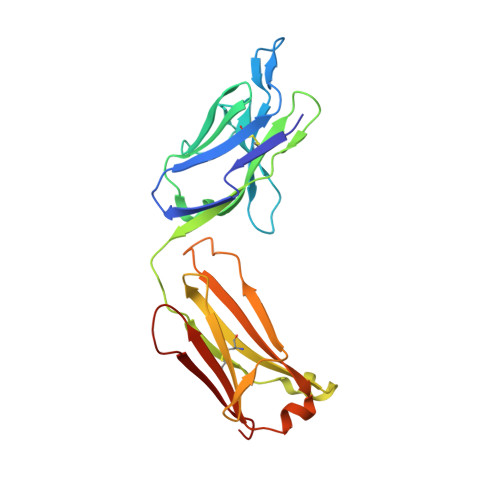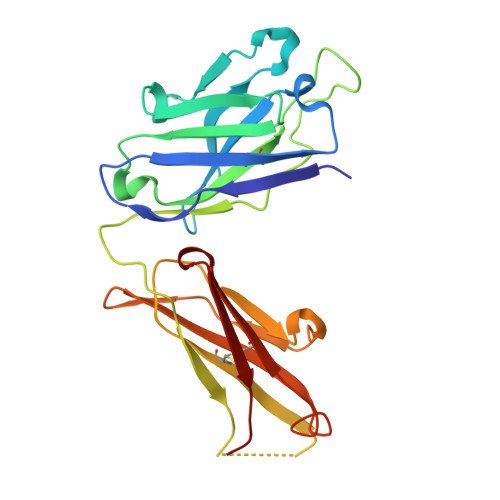The role of CDR H3 in antibody recognition of a synthetic analog of a lipopolysaccharide antigen.
Brooks, C.L., Blackler, R.J., Sixta, G., Kosma, P., Muller-Loennies, S., Brade, L., Hirama, T., Mackenzie, C.R., Brade, H., Evans, S.V.(2010) Glycobiology 20: 138-147
- PubMed: 19767317
- DOI: https://doi.org/10.1093/glycob/cwp150
- Primary Citation of Related Structures:
3IJH, 3IJS, 3IJY, 3IKC - PubMed Abstract:
In order to explore the structural basis for adaptability in near germline monoclonal antibodies (mAb), we have examined the specificity of the promiscuous mAb S67-27 to both naturally derived carbohydrate antigens and a variety of synthetic nonnatural antigens based on the bacterial lipopolysaccharide component 3-deoxy-alpha-D-manno-oct-2-ulosonic acid (Kdo). One such analog, a 7-O-methyl (7-O-Me) Kdo disaccharide, was found to bind to the antibody with at least 30-fold higher affinity than any other antigen tested. The structure of S67-27 in complex with this analog and three other naturally occurring Kdo antigens revealed that the enhanced affinity of the mAb for the synthetic analog was accomplished by the strategic positioning of CDR H3 away from a conserved Kdo binding pocket that allowed the formation of new antibody-antigen contacts. Furthermore, the comparison of this structure with the structures of related mAbs revealed how the position and structure of CDR H3 influence the specificity or promiscuity of near-germline carbohydrate-recognizing antibodies by altering the architecture of the combining site.
Organizational Affiliation:
Department of Biochemistry and Microbiology, University of Victoria, Victoria, BC V8P 3P6, Canada.
















